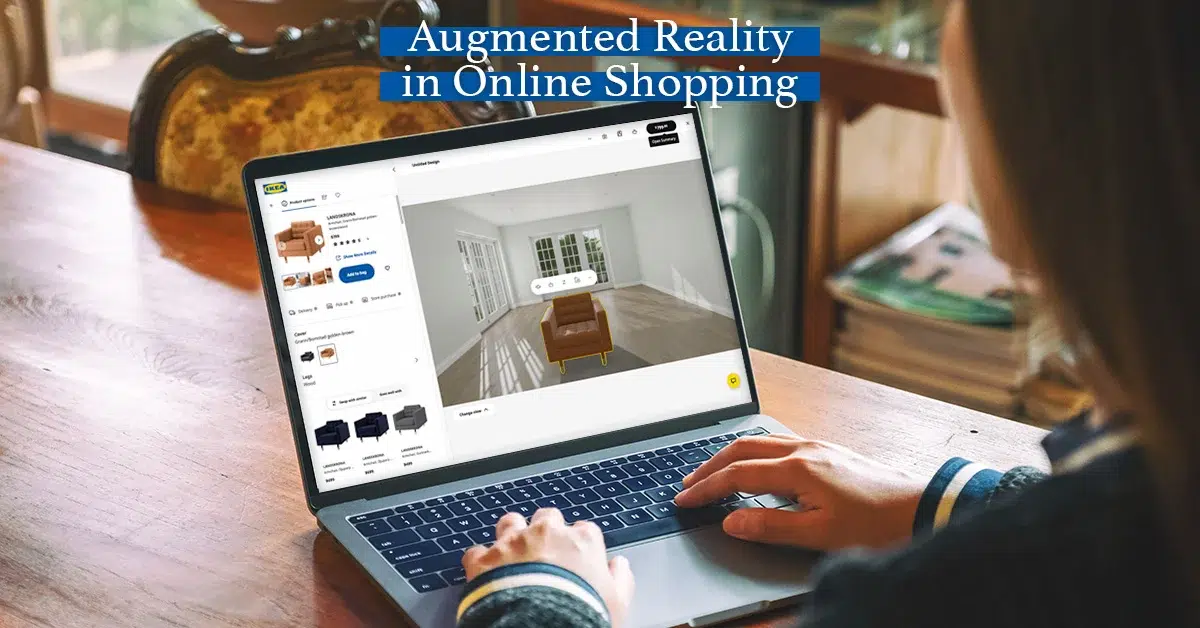
Introduction to Augmented Reality in Online Shopping
In recent years, Augmented Reality has become increasingly important in reshaping the landscape of eCommerce. But what exactly is Augmented Reality and how has it gained prominence in online shopping?
What is Augmented Reality?
Augmented Reality, often abbreviated as AR, refers to the technology that superimposes computer-generated images or information onto a user’s view of the real world. This integration of digital content with the physical environment allows for an enhanced perception of reality. In the context of online shopping, Augmented Reality enables customers to visualize products within their own surroundings before making a purchase.
The Rise of AR in Ecommerce
The use of Augmented Reality tools has been steadily increasing in the eCommerce sector. Retailers are leveraging this technology to provide customers with immersive and interactive experiences, ultimately enhancing their shopping journey. By incorporating Augmented Reality into their platforms, businesses can offer consumers a more realistic preview of products, leading to informed purchasing decisions.

Augmented Reality Boosts Online Shopping Experience
Augmented reality has significantly transformed the online shopping experience, particularly in enhancing product visualization and providing interactive shopping apps.
Enhancing Product Visualization
The integration of Augmented Reality into online shopping platforms has revolutionized the way customers visualize products. By leveraging AR technology, retailers can offer consumers a more immersive and realistic preview of items they are interested in purchasing. This enhanced visualization allows shoppers to see how products would fit into their lives, leading to more informed buying decisions.
Moreover, Augmented Reality enhances the overall shopping experience by providing a deeper level of engagement with products. Customers can interact with items as if they were physically present, gaining a comprehensive understanding of their features and functionalities. This level of interaction goes beyond traditional online browsing, creating a more personalized and informative shopping journey.
Augmented Reality Shopping Apps in Action
Several companies have successfully implemented Augmented Reality shopping apps to elevate the online shopping experience for their customers. These apps provide innovative ways for users to engage with products before making a purchase decision.
IKEA AR Shopping App
The IKEA AR Shopping App is a prime example of how Augmented Reality is utilized to enhance the customer’s shopping journey. With this app, users can virtually place furniture and home decor items within their own living spaces using their smartphone cameras. This feature enables them to assess how different pieces would look and fit in their homes before making a purchase, ultimately increasing confidence in their buying decisions.
Nike’s Virtual Fitting Shoes
Nike has also embraced Augmented Reality by introducing virtual fitting for shoes through its mobile app. Customers can now try on various shoe styles virtually using the app’s AR feature. This not only provides an engaging experience but also ensures that customers find the perfect fit without physically trying on multiple pairs in-store.
Incorporating Augmented Reality into these innovative shopping apps demonstrates how this technology significantly enhances the online shopping experience by offering interactive and personalized features.

Augmented Reality in Ecommerce: Enhancing Customer Experience
As technology continues to advance, the integration of Augmented Reality in ecommerce is proving to be a game-changer, particularly in elevating the Customer Experience.
Interactive Product Demonstrations
The implementation of Augmented Reality in ecommerce allows for interactive product demonstrations, providing customers with a more engaging and informative shopping journey. Through AR-powered platforms, customers can virtually interact with products, gaining a deeper understanding of their features and functionalities. This level of interactivity goes beyond traditional online browsing, offering a hands-on experience that enhances the customer’s perception of the products.
Moreover, Augmented Reality facilitates real-time customization and personalization of products. Customers can manipulate virtual representations of items, such as adjusting colours, sizes, or configurations, to align with their preferences. This interactive approach not only empowers customers to make informed purchasing decisions but also creates a sense of co-creation, where they feel actively involved in shaping their desired products.
Personalized Shopping Experiences
Incorporating Augmented Reality into ecommerce platforms enhances the overall Customer Experience by providing personalized shopping journeys. By leveraging AR technology, retailers can tailor product recommendations based on individual preferences and previous interactions. This level of personalization creates a more tailored and relevant shopping experience for each customer, ultimately increasing customer satisfaction and loyalty.
Furthermore, Augmented Reality enables virtual try-on experiences for items such as clothing and accessories. Customers can visualize how different styles would look on them without physically trying them on. This feature not only saves time for customers but also reduces the likelihood of returns due to mismatched expectations. The ability to virtually try on products contributes to a seamless and personalized shopping experience while minimizing potential inconveniences.
In essence, the incorporation of Augmented Reality in ecommerce significantly enhances the overall customer experience, offering interactive product demonstrations and personalized shopping journeys that cater to individual preferences.
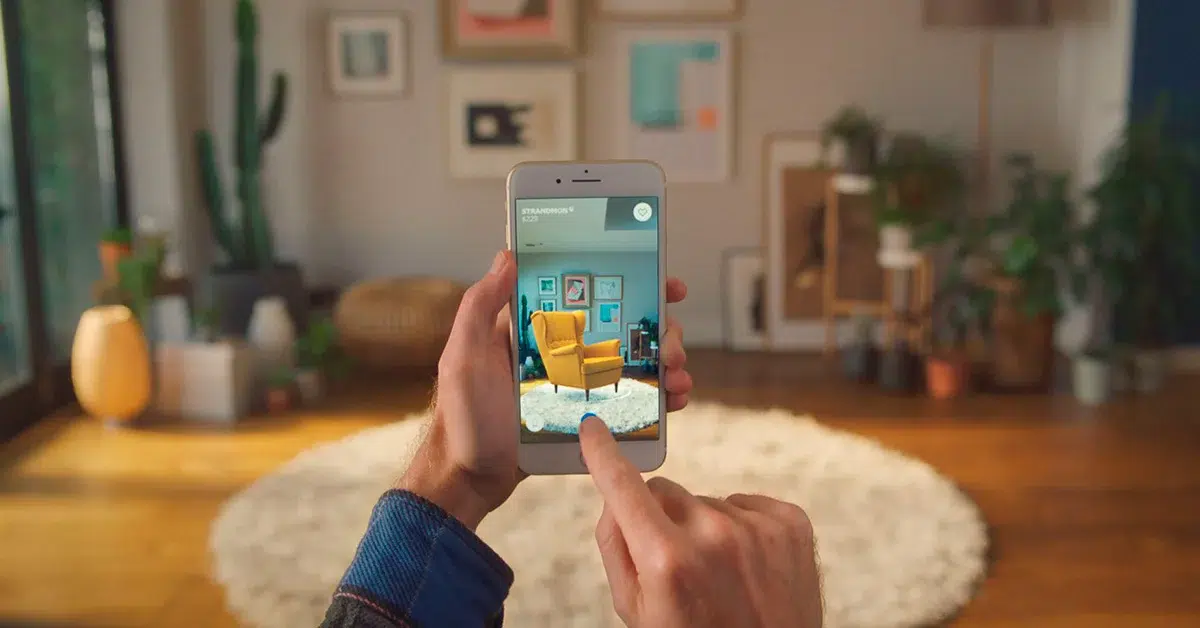
Real-World Examples: How Retailers Enhance Customer Experience with AR
Retailers across various industries are leveraging Augmented Reality to elevate the customer experience, offering innovative solutions that bridge the gap between online and offline shopping.
IKEA AR Shopping App
The IKEA Place app is a powerful example of how retailers are harnessing Augmented Reality to streamline the customer’s shopping journey. By integrating AR technology into their app, IKEA aims to provide customers with a more immersive and informed shopping experience. The app allows users to virtually place true-to-scale 3D models of IKEA products in their own homes, enabling them to see how different pieces would fit and complement their living spaces. This interactive feature not only increases customer engagement but also empowers them to make confident purchasing decisions, ultimately leading to an increase in sales.
Moreover, the IKEA Place app aims to enhance the overall customer experience by offering a seamless and convenient way for customers to explore and visualize furniture and home decor items. By leveraging AR technology, IKEA has created a virtual showroom that brings the store directly to the customer’s home, revolutionizing the way people shop for furniture online.
Shoes Sampler by Converse
Converse, a renowned footwear brand, has introduced the Converse Sampler app, which aims to transform the way customers engage with shoes through Augmented Reality. This innovative app allows users to virtually try on different styles of Converse shoes using their smartphones. By leveraging AR technology, Converse provides customers with an interactive platform where they can visualize how different shoe designs would look on their feet before making a purchase. This virtual try-on experience not only enhances customer engagement but also reduces uncertainty about style choices, ultimately leading to an increase in sales for Converse.
The integration of Augmented Reality into these retail experiences demonstrates how this technology is reshaping the way customers interact with products online. By offering immersive and interactive features, retailers are enhancing the overall shopping journey for customers while increasing sales through informed purchasing decisions.
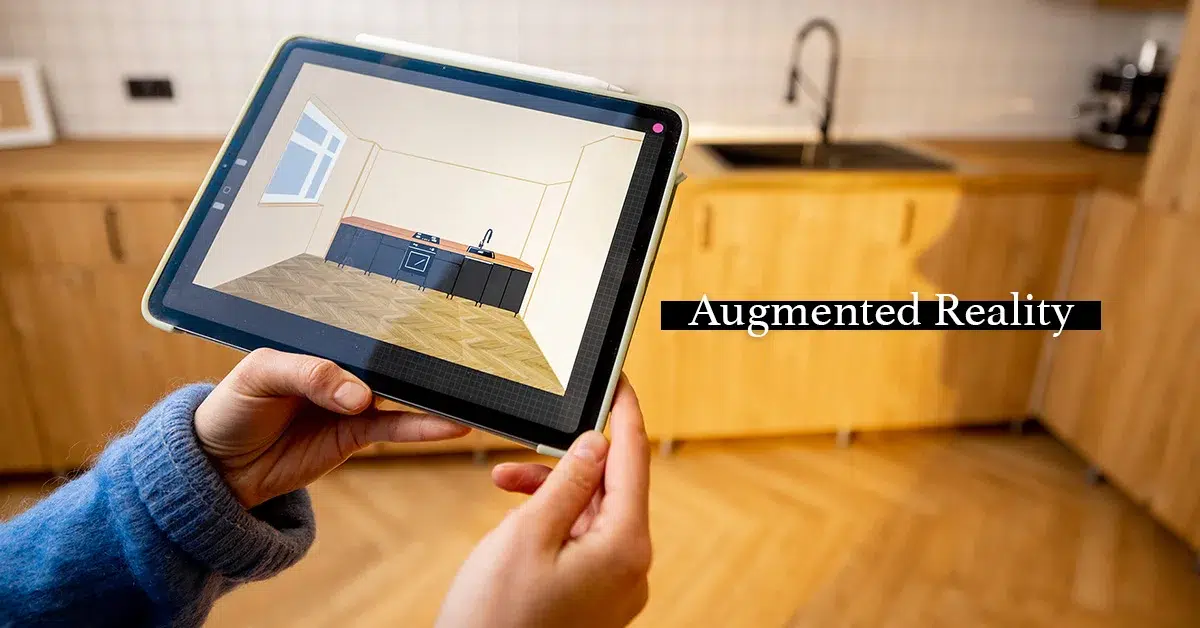
Augmented Reality vs. Virtual Reality in Retail
As technology continues to advance, the integration of Augmented Reality and Virtual Reality has reshaped the retail landscape, offering innovative solutions that bridge the gap between online and offline shopping experiences.
Differences and Similarities
Augmented Reality and Virtual Reality are both immersive technologies that alter the user’s perception of reality, yet they differ in their approach and application within the retail sector.
Augmented Reality:
- Augmented reality simply augments the real-world environment by overlaying digital information onto it, providing an enhanced view of reality.
- In retail, Augmented Reality in Retail focuses on integrating digital content with physical products, allowing customers to interact with items in a more immersive manner.
- The primary goal of Augmented retail strategy improves is to enhance the customer experience by offering interactive shopping experiences that blend the digital and physical worlds seamlessly.
Virtual Reality:
- On the other hand, Virtual Reality creates a completely simulated environment that immerses users in a digital world, often through headsets or goggles.
- In retail, Virtual Reality can be utilized for creating virtual showrooms or immersive product demonstrations, offering customers a fully simulated shopping experience from anywhere.
- The main objective of Creating Interactive Retail Shopping using Virtual Reality is to transport customers into a digitally created environment where they can engage with products as if they were physically present.
While both technologies aim to enhance customer experiences and increase sales for retailers, their approaches differ significantly. Augmented Reality in Retail focuses on enhancing real-world experiences by adding digital elements, while Virtual Reality aims to create entirely new simulated environments for customers to explore.
Choosing the Right Technology for Your Business
When considering the implementation of immersive technologies in retail, businesses must carefully evaluate which technology aligns best with their objectives and customer base.
Factors to Consider:
- Customer Engagement: Assess how each technology can enhance customer engagement within your specific industry. For example, if your business focuses on home decor or furniture sales, Augmented Reality in Retail may be more suitable for allowing customers to visualize products within their own spaces.
- Immersive Experience: Consider whether your goal is to provide an immersive experience that transports customers into a virtual environment (Virtual Reality) or enhances their existing surroundings with digital overlays (Augmented Reality).
- Technical Requirements: Evaluate the technical infrastructure required for each technology. While both require compatible devices such as smartphones or headsets, there may be variations in software development and integration needs.
- Cost and Accessibility: Analyze the cost implications of implementing either technology and consider how accessible it will be to your target audience. For instance, if the widespread adoption of VR headsets is limited among your customer demographic, focusing on AR applications may yield better results.
By carefully weighing these factors against your business goals and customer needs, you can make an informed decision about which immersive technology – whether it’s Augmented Reality, Virtual Reality, or a combination of both – aligns best with your retail strategy.
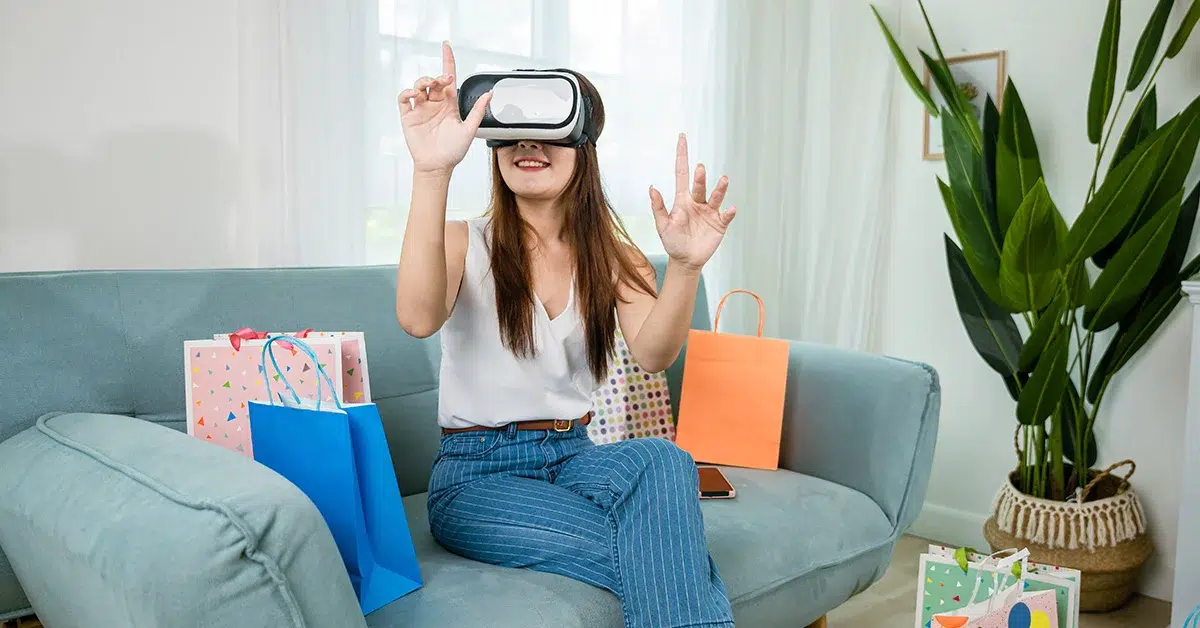
The Future of Augmented Reality in Retail
As technology continues to evolve, the future of Augmented Reality (AR) in retail holds promising opportunities for enhancing the customer experience and driving sales. Emerging trends and technologies are shaping the way retailers integrate AR into their ecommerce strategies, ultimately transforming the future of shopping.
Emerging Trends and Technologies
The landscape of retail is witnessing a surge in emerging trends and technologies that leverage Augmented Reality to elevate the online shopping experience. One notable trend is the integration of AR-powered virtual try-on experiences across various product categories, including apparel, accessories, and cosmetics. This trend aims to provide customers with a more interactive and personalized shopping journey, allowing them to virtually visualize products before making purchasing decisions.
Moreover, retailers are exploring the potential of AR-enhanced product customization, enabling customers to personalize items such as furniture, home decor, and electronic devices through interactive AR interfaces. This trend not only enhances customer engagement but also empowers individuals to co-create products according to their preferences, thereby increasing satisfaction and brand loyalty.
Additionally, advancements in AR technology are paving the way for seamless integration with social media platforms. Retailers are capitalizing on this trend by incorporating AR features into social commerce strategies, allowing customers to engage with products through immersive experiences directly within their social media feeds. By merging social interaction with AR-enhanced shopping experiences, retailers can increase brand visibility and drive sales through enhanced customer engagement.
Augmented Reality and the Future of Shopping
The future of shopping is intricately linked with the widespread adoption of Augmented Reality, presenting a paradigm shift in how customers interact with products online. As AR technology becomes more accessible and sophisticated, it will redefine traditional ecommerce practices by offering unparalleled levels of interactivity and personalization.
One key aspect shaping the future of shopping is the seamless integration of AR into omnichannel retail strategies. Retailers are increasingly leveraging AR solutions that bridge the gap between online and offline shopping experiences, allowing customers to seamlessly transition from virtual product interactions to physical store visits. This convergence creates a cohesive shopping journey that transcends traditional boundaries, offering customers a unified experience across digital and physical touchpoints.
Furthermore, as consumer expectations continue to evolve, Augmented Reality will play a pivotal role in meeting these demands by providing immersive and informative product demonstrations. The future of shopping will see an emphasis on lifelike representations of products through AR technology, enabling customers to gain comprehensive insights into item features, functionalities, and suitability within their own environments.
In essence, Augmented Reality is poised to revolutionize the future of retail by redefining how customers engage with products online while creating seamless omnichannel experiences that cater to evolving consumer preferences.
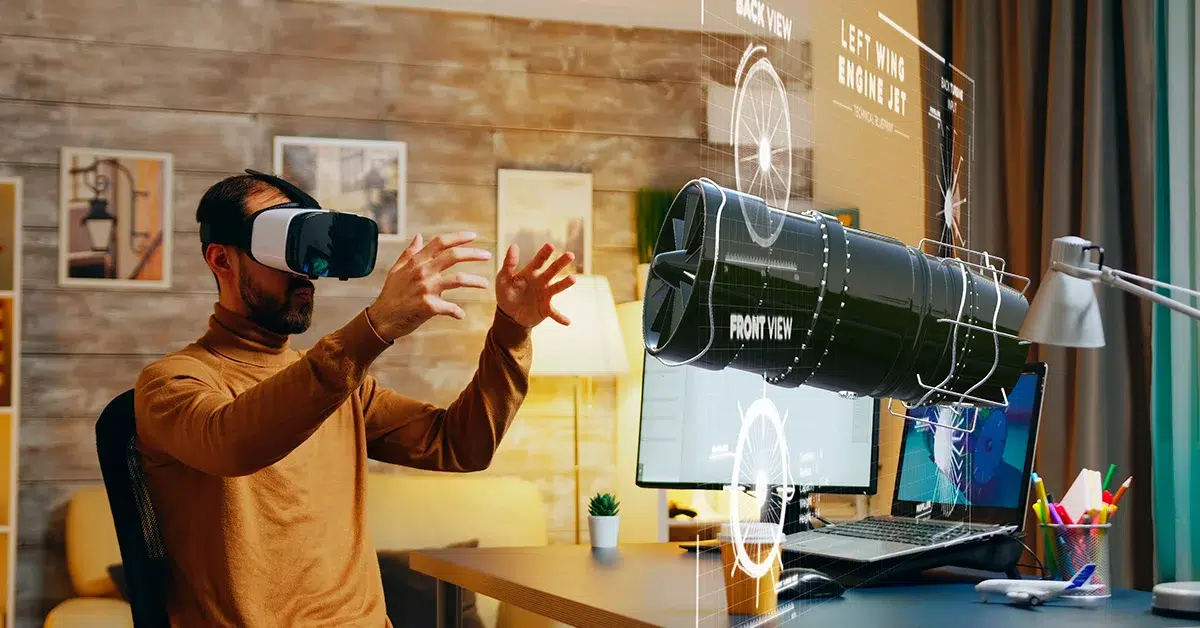
Overcoming Challenges: Implementing AR in Ecommerce
Implementing Augmented Reality (AR) in ecommerce presents both technical and consumer-related challenges that businesses need to address in order to successfully integrate this immersive technology into their online platforms.
Technical Challenges and Solutions
The integration of Augmented Reality into ecommerce platforms introduces various technical challenges, ranging from compatibility issues to the development of seamless AR experiences. These hurdles require innovative solutions to ensure a smooth implementation of AR technology.
One of the primary technical challenges is ensuring cross-device compatibility for AR experiences. As Augmented Reality relies on device capabilities such as cameras and sensors, businesses must develop AR solutions that are compatible with a wide range of smartphones and tablets. This necessitates the use of versatile AR frameworks and software development kits (SDKs) that can adapt to different devices and operating systems, ensuring a consistent experience for all users.
Moreover, creating lifelike and interactive AR experiences requires robust 3D modeling and rendering capabilities. Businesses need to invest in advanced 3D modeling tools and technologies to accurately represent products in an augmented environment. Additionally, optimizing these 3D models for real-time rendering on mobile devices is crucial for delivering seamless AR interactions. By leveraging efficient rendering techniques and compression algorithms, businesses can ensure that AR experiences remain immersive while minimizing performance impact on users’ devices.
Another technical challenge lies in integrating AR features seamlessly within existing ecommerce platforms. Businesses must develop scalable and modular solutions that can be easily integrated with their current websites or mobile applications. This involves adopting flexible APIs and backend infrastructure that support the delivery of AR content while maintaining overall platform stability. Furthermore, implementing robust content management systems for AR assets is essential for efficiently updating product visualizations and interactive elements without disrupting the user experience.
To overcome these technical challenges, businesses can collaborate with experienced AR development teams or partner with specialized agencies that offer comprehensive solutions for integrating Augmented Reality into ecommerce. By leveraging the expertise of professionals in the field, businesses can navigate technical complexities more effectively while ensuring a seamless transition towards offering immersive AR experiences to their customers.
Consumer Adoption and Engagement
While overcoming technical hurdles is essential, fostering consumer adoption and engagement with Augmented Reality experiences poses its own set of challenges for ecommerce businesses. Understanding consumer behaviours and preferences is crucial for driving the widespread adoption of AR features among online shoppers.
One key challenge is educating consumers about the benefits of using Augmented Reality in their shopping journeys. Many shoppers may be unfamiliar with how AR enhances product visualization or personalizes their shopping experiences. Therefore, businesses need to implement effective educational campaigns across their digital channels to showcase the value proposition of using Augmented Reality when making purchasing decisions. This may include creating tutorial videos, interactive demos, or blog posts that highlight the practical advantages of using AR tools while shopping online.
Additionally, addressing potential privacy concerns related to using AR features is vital for building trust among consumers. Businesses must transparently communicate how user data is utilized within AR applications, emphasizing data security measures and user privacy protections. By prioritizing transparency and data security, businesses can alleviate consumer apprehensions about engaging with Augmented Reality features, thereby encouraging greater adoption among online shoppers.
Furthermore, promoting seamless accessibility to AR-enabled features across various devices is essential for maximizing consumer engagement. Businesses should ensure that their ecommerce platforms offer intuitive navigation paths to access augmented product visualizations or try-on experiences without requiring additional downloads or complex setup procedures. Simplifying the user journey towards engaging with Augmented Reality fosters higher levels of participation among customers who seek interactive shopping experiences.

Conclusion: The Impact of AR on Ecommerce and Retail
In conclusion, the integration of Augmented Reality (AR) has significantly transformed the landscape of ecommerce and retail, offering a multitude of benefits for businesses and customers alike.
Summarizing the Benefits of AR
Augmented Reality has proven to enhance customer experience by providing interactive product demonstrations, personalized shopping journeys, and immersive product visualization.
By leveraging AR technology, businesses can offer customers a more engaging and informative shopping journey, ultimately leading to an increase in sales and customer satisfaction. The seamless integration of AR into ecommerce platforms empowers customers to make informed purchasing decisions while enjoying a more personalized and interactive shopping experience.
Moreover, Augmented Reality aligns with business strategies aimed at increasing customer engagement and sales. It offers retailers the opportunity to bridge the gap between online and offline shopping experiences, creating a cohesive omnichannel approach that caters to evolving consumer preferences. By enhancing real-world experiences with digital elements, businesses can effectively differentiate themselves in the competitive ecommerce landscape while meeting the demands of tech-savvy consumers.
The Road Ahead for AR in Shopping
As technology continues to advance, the road ahead for Augmented Reality in shopping is paved with opportunities for further innovation and growth. Businesses are increasingly recognizing the potential of AR-powered commerce apps in reshaping the online shopping experience. The future holds promising prospects for integrating Augmented Reality across various product categories, from apparel to home decor, as part of a comprehensive business strategy alignment aimed at enhancing customer experience and increasing sales.
The evolution of AR-enhanced commerce apps will continue to play a pivotal role in driving consumer engagement and loyalty. As businesses embrace this transformative technology, they will be better positioned to meet the evolving needs of online shoppers while staying ahead in an ever-changing retail landscape.




